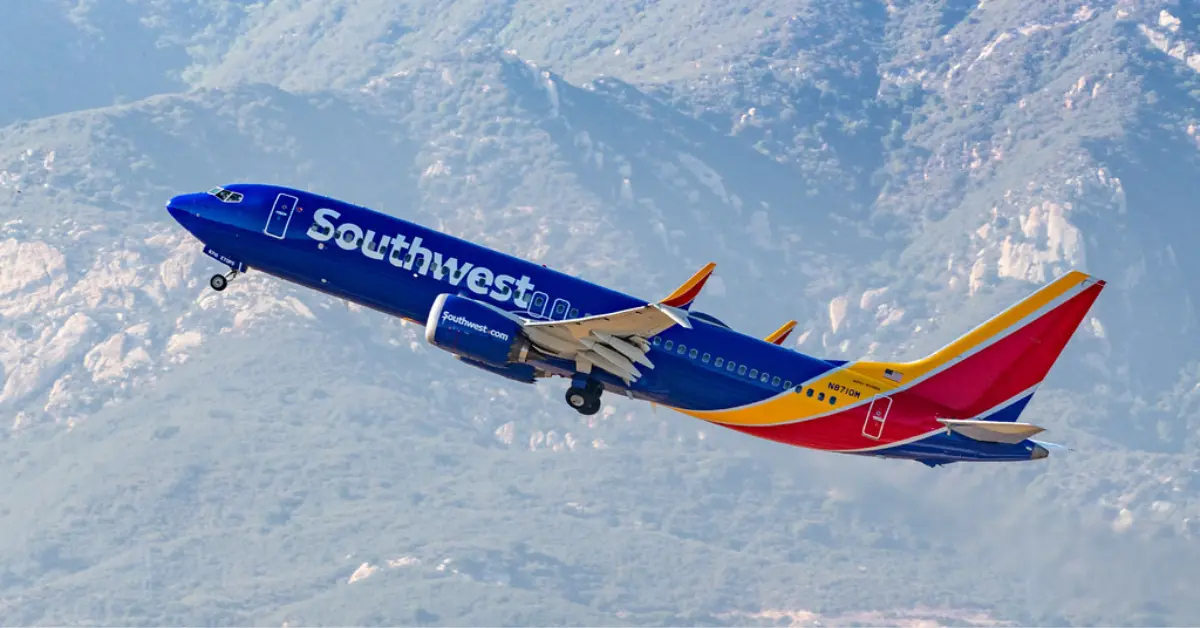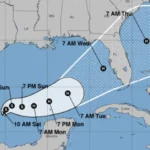A Southwest Airlines Boeing 737 Max sustained substantial damage during a May 25th flight due to a rare "Dutch roll" maneuver. The incident, which resulted in no injuries, is under investigation by the FAA and NTSB to determine the cause and potential safety implications.

A Southwest Airlines Boeing 737 Max 8 aircraft experienced an unusual and potentially hazardous event known as a “Dutch roll” during a flight on May 25th, 2024.
The incident, which occurred on Flight 746 en route from Phoenix to Oakland, resulted in substantial damage to the aircraft’s tail section and has prompted investigations by the Federal Aviation Administration (FAA) and the National Transportation Safety Board (NTSB).
While the plane landed safely with no injuries reported, the incident has raised questions about the 737 Max’s safety and the broader implications for aviation.
Unraveling the Dutch Roll Phenomenon
A Dutch roll is a complex aerodynamic phenomenon characterized by a combination of yawing (side-to-side movement) and rolling (wingtip-to-wingtip motion).
It’s often likened to the movement of a Dutch ice skater. While rare, Dutch rolls can occur due to various factors, such as turbulence, pilot input, or imbalances in the aircraft’s stability.
The maneuver can cause significant stress on the aircraft structure and discomfort for passengers.
Anatomy of the Southwest 746 Incident
Southwest Flight 746 was cruising at an altitude of approximately 34,000 feet when the Dutch roll occurred.
The precise sequence of events leading up to the maneuver is still under investigation.
However, preliminary findings indicate that the plane sustained substantial damage to its tail section, including the rudder power control unit (PCU).
The PCU is a critical component that provides backup power to the rudder, ensuring the aircraft’s directional control.
FAA and NTSB Investigations: Uncovering the Truth
The FAA and NTSB have launched investigations to determine the root cause of the Dutch roll and assess any potential safety implications.
Investigators are analyzing flight data recorder information, which captures various parameters of the flight, such as airspeed, altitude, and control inputs.
Unfortunately, the cockpit voice recorder, which could provide valuable insights into the crew’s actions and communications, was overwritten due to its limited recording capacity.
Boeing 737 Max Scrutiny: A Wider Context
The incident has drawn attention to the Boeing 737 Max, an aircraft that has faced scrutiny following two fatal crashes in 2018 and 2019.
While this recent incident is unrelated to the issues that led to those tragedies, it has renewed concerns about the aircraft’s safety.
In particular, the Dutch roll incident occurred shortly after a new Alaska Airlines 737 Max 9 experienced a door plug blowout, leading to a temporary grounding of that particular Max variant.
Ensuring Future Safety: Lessons and Precautions
The investigations into the Southwest 737 Max Dutch roll incident are ongoing, and their findings will be crucial in determining any necessary changes to pilot training, aircraft design, or regulatory measures.
Pilot training programs already include instruction on recognizing and recovering from Dutch rolls.
However, this incident could lead to enhanced training scenarios or additional emphasis on this maneuver.
Additionally, aircraft manufacturers like Boeing may consider design modifications to further improve the 737 Max’s stability and reduce the likelihood of Dutch rolls.
Regulatory agencies like the FAA may also assess whether any adjustments to existing regulations are warranted to ensure the continued safety of air travel.
Conclusion
The Southwest 737 Max Dutch roll incident serves as a reminder of the complex challenges in aviation safety.
While the incident caused significant damage to the aircraft, the safe landing and absence of injuries highlight the effectiveness of pilot training and safety procedures.
The ongoing investigations by the FAA and NTSB will shed light on the specific causes of this incident and pave the way for potential improvements in aircraft design, pilot training, and regulatory oversight.
The aviation industry remains committed to prioritizing passenger safety and continuously striving for a safer flying experience for everyone.
Related Posts
- Newark Airport Ground Stop Triggers Mass Flight Delays

- World Forum on Gastronomy Tourism Heads to Bahrain for First-Ever Middle East Event

- Medtronic Twin Cities Marathon 2024: Your Guide to the Race, the City, and the Fun

- Tropical Storm Milton to Become Hurricane, Taking Aim at Florida

- Don’t Miss the Thrilling Pacific Airshow 2024 in Huntington Beach

